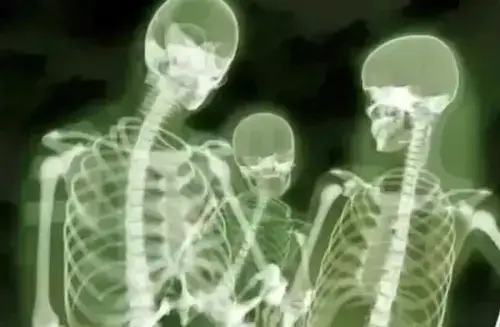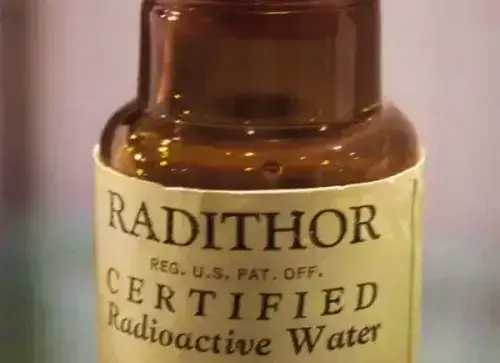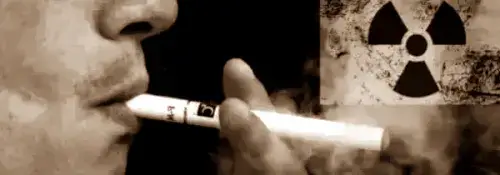Radiation is one of those words that scares many people. It is a type of electromagnetic radiation, understood to be dangerous, emitted by molecules as they break down.
The periodic table gives off several rows of radioactive elements, and they all come mainly after uranium.
Radiation, invisible and destructive, is extremely dangerous to humans.
If anything, and fortunately, natural Earth shields protect us from cosmic radiation from space.
Radiation is almost never found on Earth in natural conditions – only in nuclear power plants and other places you don’t know about.
Ionizing radiation.
If radiation is strong enough, it can damage our body’s DNA and cells. Such radiation is called ionizing radiation and is measured in sieverts.
One sievert can already increase the risk of cancer by about 5.5%, and eight sieverts can cause death.
Sources in everyday life.
Yes, there are and you should know about them. I will say right away that I will not look at the radiation from an atomic bomb explosion, because I hope I will not have to experience it.
X-ray.
X-rays, which allow doctors to diagnose bone fractures and other internal injuries, cause fear in many people, especially when it comes to their effects on children or pregnant women.
However, modern studies show that the radiation dose from conventional radiography is significantly lower than the dangerous level.
 For example, during a standard X-ray, a person receives only about 0.11 millisieverts (mSv), and during fluorography – even less, about 0.04 mSv.
For example, during a standard X-ray, a person receives only about 0.11 millisieverts (mSv), and during fluorography – even less, about 0.04 mSv.
For comparison, during an eight-hour airplane flight, a person receives almost the same dose of natural radiation.
The highest radiation dose among diagnostic procedures is caused by computed tomography (CT) – about 4 mSv per examination.
If anything, this is dozens of times below the threshold at which radiation can seriously harm human health.
If necessary, X-rays can be performed even on pregnant women, because if the procedure is really justified, the risk to the health of the mother and child is minimal.
Airport scanner.
Many people are concerned about the safety of scanners at airports, because they use X-rays to screen passengers.
However, in reality, the radiation dose that passengers receive when passing through the scanner is from 0.015 to 0.88 microsieverts (µSv), which is an extremely low figure.
To obtain a dose comparable to a regular X-ray, such a scanner must be passed thousands of times.
 From bananas.
From bananas.
Since we are talking about radioactivity, it is worth mentioning bananas.
Many of you have probably heard that bananas are not only a tasty and healthy fruit, but also a source of a small amount of radiation.
This is because they contain potassium-40, a radioactive isotope that occurs naturally in nature.
However, do not be afraid!
Although bananas emit ionizing radiation, it is so small that it does not pose a health threat.
Eating one banana, a person receives only 0.0778 microsieverts – this is extremely small compared to some medical procedures.
For example, a chest CT scan “costs” 70 thousand bananas, and the environmental impact of a nuclear power plant per year can be compared to 2.5 thousand bananas.
Cigarette.
Few people think that cigarettes are not only a source of nicotine, but also a source of radiation.
Tobacco smoke contains radioactive elements such as radium-226, lead-210 and polonium-210.
It is worth recalling that this “nice” cocktail is deposited in the lungs during smoking. These substances emit alpha particles, which are much more dangerous than X-rays.
As a result, smokers receive a radiation dose that can reach 250 microsieverts per year if a person smokes 30 cigarettes every day.
 Water.
Water.
Water is the basis of life, but even it can contain radioactive elements.
One of the most common is tritium, which is formed in the atmosphere under the influence of cosmic rays.
However, its content in drinking water is usually so low that it is considered harmless to health.
Every year we receive about 50 microsieverts of radiation through drinking water, which is a safe level.
Other radioactive elements can also be found in water, such as radon, uranium and radium. These substances can enter water sources from rocks and soil.
It surrounds us everywhere.
In the air, in water and even in everyday objects. But don’t panic: most sources of radiation are relatively safe and in small doses.
However, it is important to understand how it affects the body and how you can reduce the risk.
A little bit of paradox.
According to Interesting Engineering, one of the first energy drinks was developed by William Bailey in the US state of New Jersey in 1918.
It was called “Radithor” and consisted of only three ingredients: pure water, as well as the isotopes of radium 226 and 228.
In those days, people were not particularly interested in the invigorating effect – they were most attracted by the fact that the drink was positioned as a powerful aphrodisiac that increased libido, potency and sexual satisfaction.
One small can of Radithor energy drink cost $ 30. At that time, it was a large money.
 One of the rich people who could afford the modern drink was Eben Byers.
One of the rich people who could afford the modern drink was Eben Byers.
He began to drink it regularly, three bottles a day. It didn’t take long – when the man turned 50, he realized that something strange was happening to his body.
Despite his relatively young age, he began to lose weight rapidly, began to experience severe headaches, and also began to lose his teeth.
The situation reached the point when the man had to be bandaged from head to toe.
It became clear that the cause of his illness was radiation, his entire lower jaw was removed and only two teeth remained.
All the tissues of his body began to decompose, and holes began to form in his skull – energy drink lover Eben Byers began to literally decompose while still alive.
The man died in 1932, and an autopsy showed that 36 micrograms of radium had accumulated in his body.
This is despite the fact that the lethal dose for humans is considered to be 10 micrograms.
The man’s body had to be buried in a lead coffin. After the man’s death, the sale of “Raditor” was banned. Unfortunately, this shows that this is no joke!
Good day!





